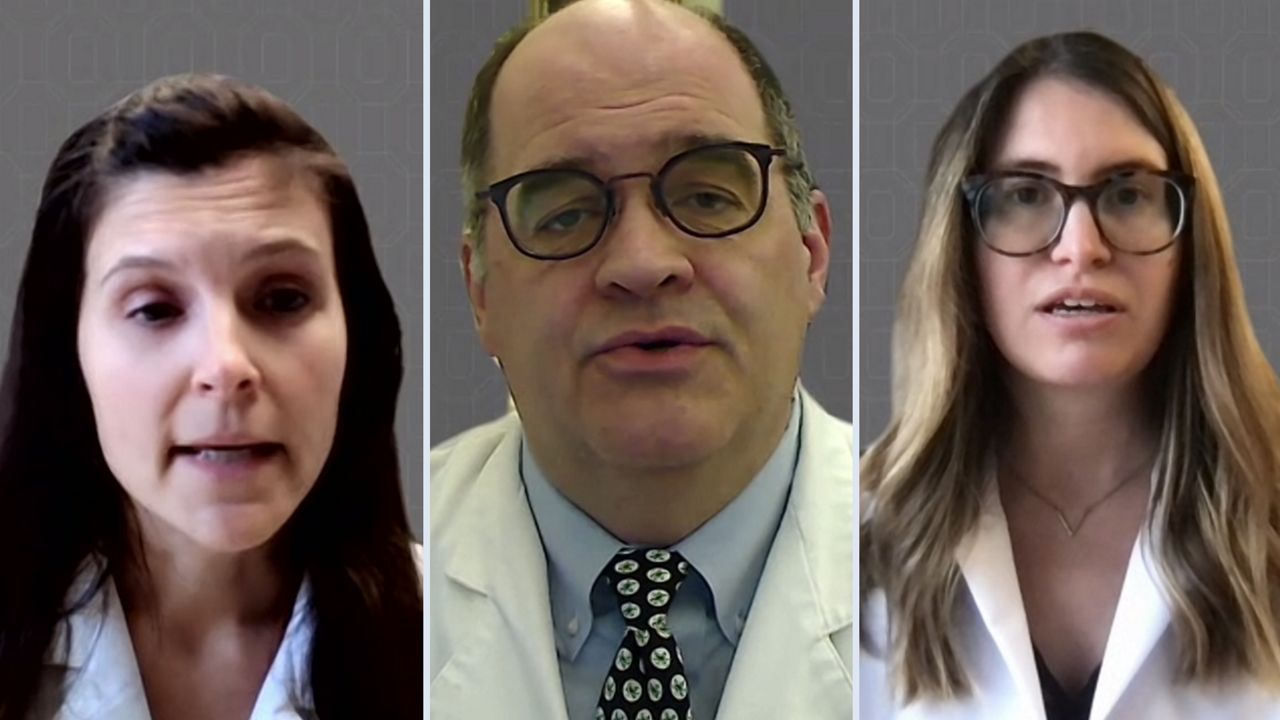COLUMBUS, Oho — As the virus surge worsens causing some central Ohio hospitals to delay elective surgeries, Ohio State Wexner officials urged the public to take precautions against COVID-19 and to consider treatment options immediately if you test positive.
What You Need To Know
- Many Ohioans may be eligible for a therapeutic treatment
- Some central Ohio hospitals are delaying elective surgeries
- Midwest states have the highest hospitalization rates in the U.S.
At many hospitals in the region, intensive care unit and hospital beds are full, meaning that patients are waiting in an emergency room bed until they can be transferred, Dr. Andrew Thomas, Wexner’s Chief Clinical Officer, told reporters Wednesday
“All of the local hospitals and all the hospitals in our zone are really expressing concern about where we're going with this surge of patients over the last five to six weeks,” Thomas said.
The surge comes at a difficult time as officials are bracing for the omicron variant to become dominant in central Ohio within the next 6-8 weeks and possibly sooner, the hospital experts said.
Sara Koenig, Wexner’s lead scientist for its COVID genetic sequencing lab, said the delta variant took about two months to become dominant, but the omicron variant appears to be on a more accelerated timeline.
At least four cases of the variant have been reported in Ohio, with Wexner announcing the first detections in the state Saturday.
But Thomas said regardless of which variant a patient contacts, the approach to treatment and recommendations don’t change.
“It's the same – not sleeping in the same room, not using the same bathroom, not using the same cups and utensils,” he said. “Oftentimes, we don't know what the variant is for days afterwards. It really doesn't change what someone needs to do.”
Thomas said COVID-19 cases have increased by 50% in Ohio over the last month, bringing average daily cases to about 7,500, which is three quarters of the peak last year. He said the central Ohio region is reporting about 900 COVID-19 patients, which is also three quarters of the peak last year.
Ohio is part of a cluster of four states, including Pennsylvania, Michigan and Indiana, with the highest rates in the country of virus hospitalizations per capita, according to Health and Human Services data.
In parts of the state, hospitals are dealing with hundreds of their own staff members being sidelined due to COVID-19, exacerbating staffing issues, Thomas said.
The Ohio National Guard is actively considering options to support strained hospitals in the state, following moves by some other states to activate the National Guard due to the current COVID surge, Thomas said. But he explained that many of the nurses in the National Guard are the same nurses who work in Ohio hospitals.
Hospital epidemiologist Dr. Christina Liscynesky said unvaccinated patients who get sick, especially if they have risk factors like obesity, should not wait to talk to a medical professional about getting a monoclonal antibody treatment, which can reduce the chances of progression to severe illness.
“Anecdotally, what we hear from patients is they feel much better after the infusion. It's really important though, that this needs to happen within seven days of symptom onset and really, quite frankly, it needs to happen within the first few days,” she said. “In general, this virus, it doesn't get better at home, so it's one of those things that you need to be very vigilant about.”
Ohio State Wexner has administered about 3,000 infusions to eligible patients, which includes seniors over 65 and people with certain risk factors.




